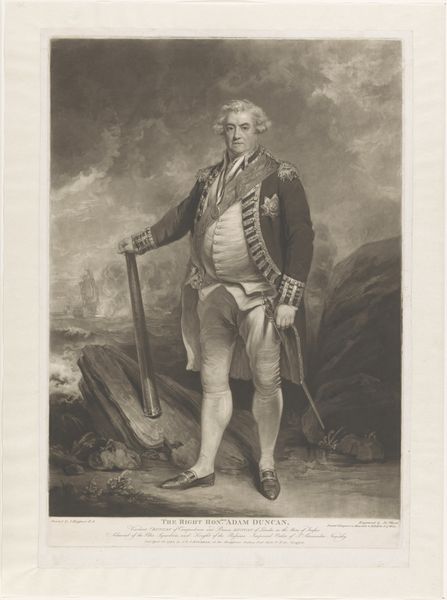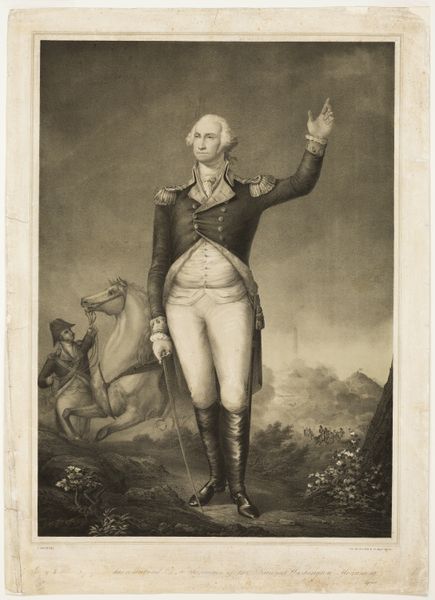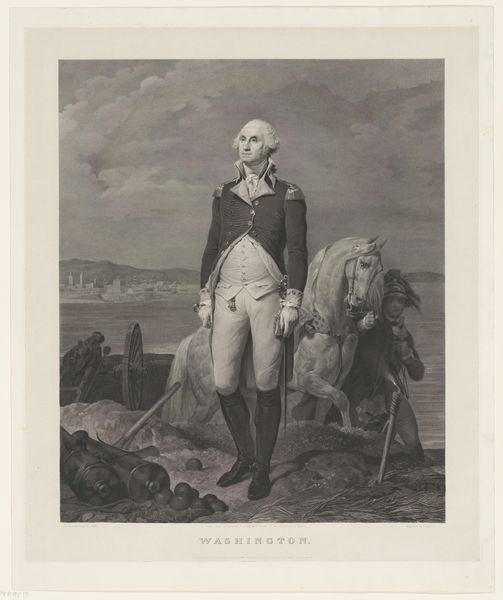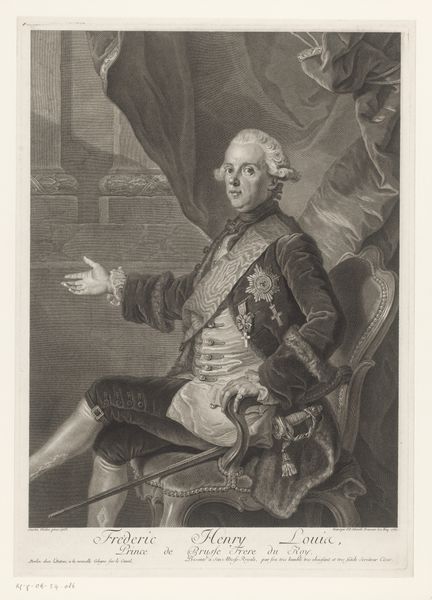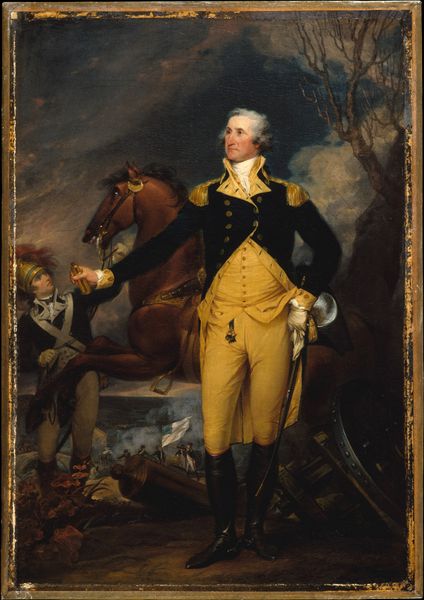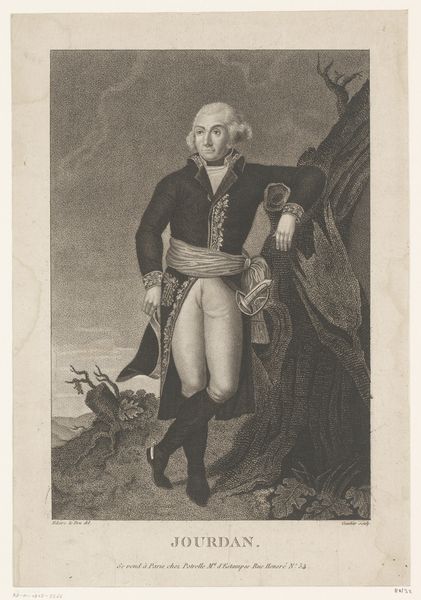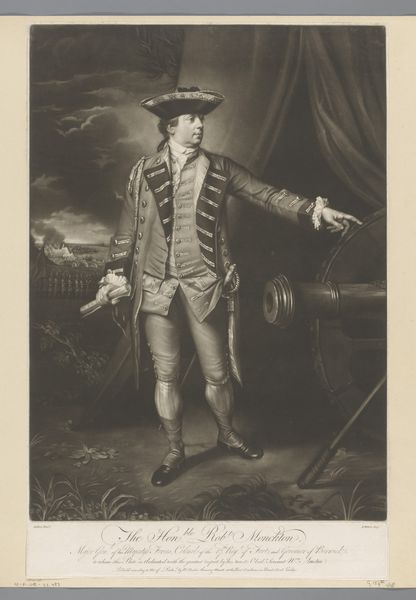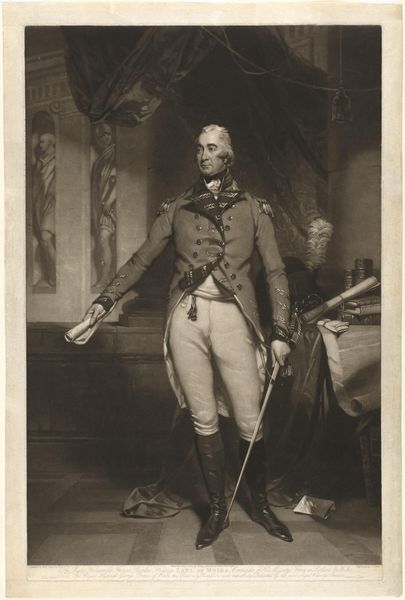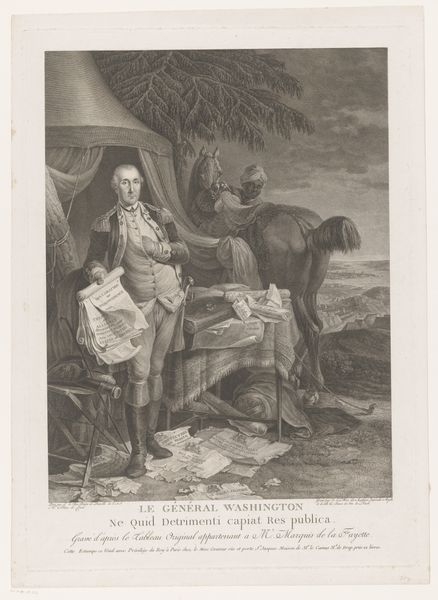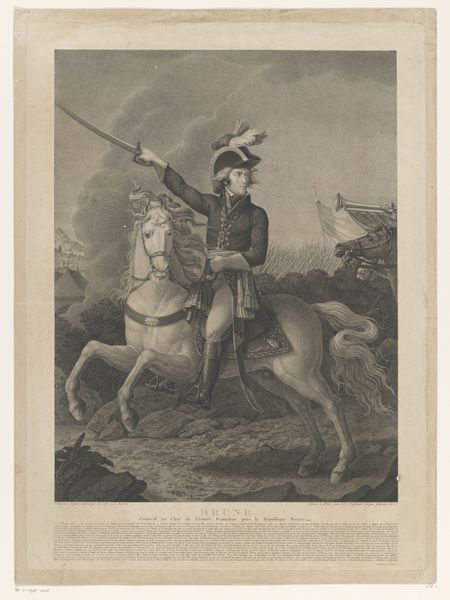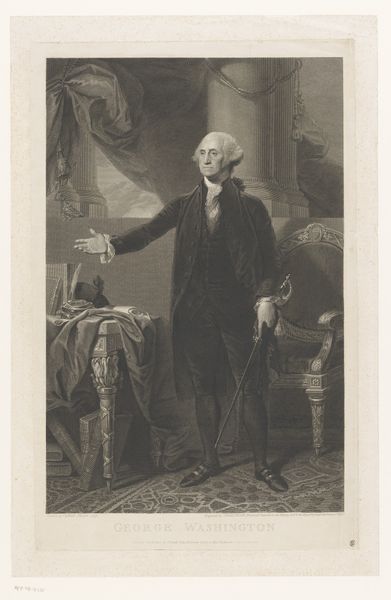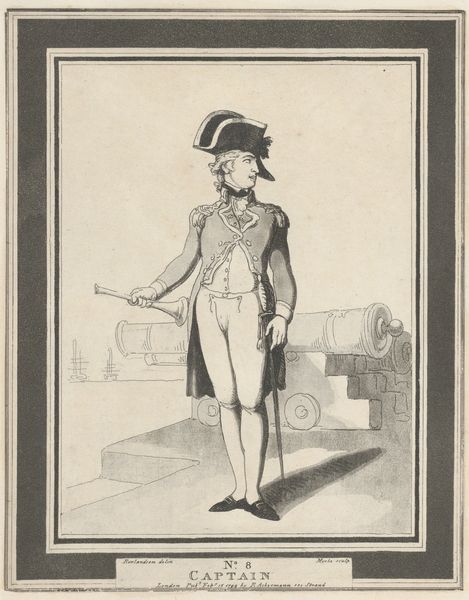
engraving
#
portrait
#
neoclacissism
#
historical fashion
#
19th century
#
history-painting
#
academic-art
#
engraving
Dimensions: height 493 mm, width 730 mm
Copyright: Rijks Museum: Open Domain
This portrait of George Washington was produced by Thomas Cheesman using a technique called mezzotint. Unlike engraving, where lines are cut into a plate, mezzotint begins with roughening the entire surface to create a dense, dark tone. The artist then works ‘from dark to light,’ burnishing areas to create lighter values. Look closely and you can see the soft, velvety texture characteristic of mezzotint. The process allowed for subtle gradations of tone, lending a sense of depth and realism to the image of Washington. But there’s also a layer of social meaning embedded in this printmaking technique. Mezzotint was a labor-intensive process that required specialized tools and skills. Prints like this were luxury goods, demonstrating technical virtuosity, and intended for a well-to-do audience. By focusing on the materials and the making, we can appreciate how Cheesman's print operates not just as a portrait, but as a showcase of craft and a signifier of status. It’s a reminder that even seemingly straightforward images are shaped by the labor and social context of their production.
Comments
No comments
Be the first to comment and join the conversation on the ultimate creative platform.

